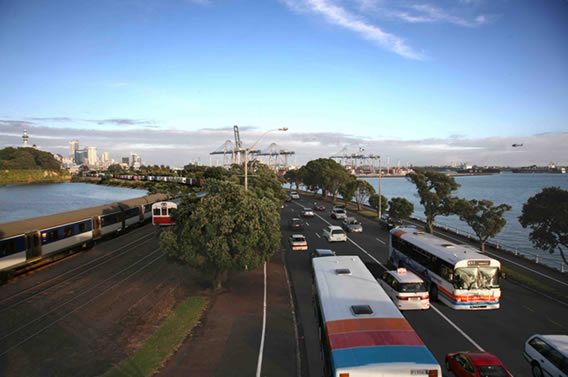The Unitary Plan – but is it unifying?
The public have responded to the Auckland Council Unitary Plan with a massive 22,700 submissions. .
I must confess there is still a lot about the Unitary Plan that doesn’t make sense to me. Probably the biggest puzzle is why the almost frantic rush to get it done as quickly as possible. To justify this some rather extravagant statements have been made by the Mayor and council planners. Panic is contagious of course – the council’s more alarmist announcements about the need for ‘pace’ have, along with graphic illustrations of towering high rises in many neighbourhoods, spooked communities across Auckland, inadvertently touching-off a public backlash. We should bear in mind that basically a unitary
plan should simply be about the rationalisation and folding together of the
seven legacy council district plans and the ARC regional policy statement and
regional coastal plan; to sensibly reflect the amalgamation which created the
‘Super City’.
But there is more to this of course because the council also wants to use the Unitary Plan to make big changes, citing the Auckland Plan, to enable much more and much faster development across Auckland. The reason for all this is the claimed one million extra people who will be coming to Auckland by the year 2041.
But why are council planners basing residential development plans on the maximum growth scenario yet council-owned Watercare, whose job it is to provide the water and wastewater services for such developments is still working on a medium growth scenario? While Auckland Transport already struggling with the present the transport infrastructure deficit is raising serious questions of the cost to ratepayers of the high growth scenario.
It’s important to remember the ‘unitary plan’ despite some of the rhetoric around it, is not an ‘everything plan,’ but if the council agencies themselves are not united in their planning, it does raise serious questions. More importantly what happens to Auckland’s environment if we have open –slather, maximum growth development without the sanitary and transport infrastructure to support it? To resolve this question the Council should wait until the release of the national census figures later this year and then base its projections on the best available data. An even stronger reason for a pause is to give serious consideration to the 22,700 public submissions from the Auckland public. But I see no sign of this at all unfortunately.
While the Unitary Plan is being sold as being about a ‘compact city’ – that’s really spin. 30 – 40% of future growth (and in reality more) is actually targeted for outside the present Metropolitan Urban Limits. The MUL themselves will be abolished and replaced by a ‘Rural-Urban Boundary’ and pushed out by some 20,000 hectares, plus more development is to be encouraged around coastal settlements. This, to enable the building of 160,000 new dwellings in the rural greenbelt over the next 30 years. While this will mean a major lateral expansion of Auckland.
So the Unitary Plan is not really about a compact city. It will mean a more sprawling city, a more intensified city (there is a difference) – with infill housing sprouting up all through our garden suburbs. And of course as many people fear, a more high-rise city. Developer driven Auckland will be growing every which way. And whatever its stated objectives it’s not really about people and communities either. Though major changes are planned we can be sure the deeply-ingrained council culture of non-notified secrecy in which the public are routinely excluded from a say-so in their neighbourhoods, historic character buildings are demolished, views and sunlight blocked, and grotesque developments like a Bunnings complex in historic Arch Hill are recommended by council officers, will carry on.
As your ward councillor I have pledged to fight the Bunnings proposal – as has Shale Chambers and the Waitemata Local Board – but unfortunately this is not untypical. The Unitary Plan at this stage therefore is looking very much like a lost opportunity – it could have been a wonderful chance for community-based, ground-up, leading-edge planning as has been advocated by Ponsonby residents. A plan which could have taken Auckland well into the 21st century with a whole new paradigm.
Not only ‘unitary’ it could have been unifying.
(Published in Ponsonby News July 2013 edition).



